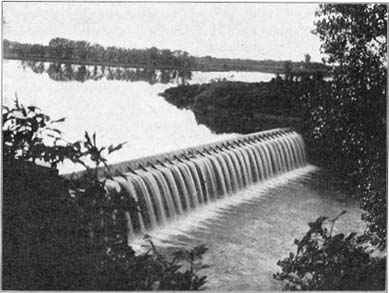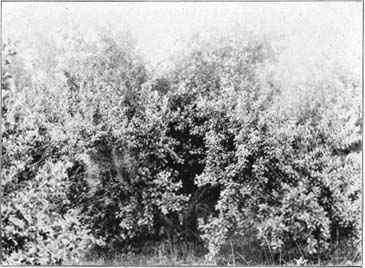sel to fight these land tax cases. Meanwhile the
United States Supreme court in a similar case in Kansas
had held that the land was not subject to tax for two
reasons: First, because the company had not paid the fees
and received their patents; Second, because if the land
was sold for taxes and the title acquired by a tax
purchaser it might defeat the provision of the land grant
act which provided that under certain conditions the land
should revert back to the public for settlement. The
editor of The Lincoln State journal dared to pronounce
this decision in the United States Supreme Court: "Sheer
nonsense which would defeat any tax ever being collected
on the land." Many of the counties had issued bonds and
warrants based on calculations including the taxes on
these lands. They now found themselves unable to meet
their obligations and their paper greatly depreciated.
The revenue system of
the state was a failure. The Omaha Herald of August 22,
1873, declared that for four years one-third of all the
property owners in the state had refused to pay taxes.
More than half the Otoe county real estate was delinquent
for taxes prior to 1873. Single individuals owed from
$2,000 to $3,000 for taxes. The county and municipal
bonds which had been so lavishly voted to aid railroad
and other schemes were now an intolerable burden.
When the legislature
met in 1873 Governor Furnas told them that there were
$300,000 taxes delinquent and more than that of local
taxes, that there was great stringency in money and a
meagre price for farm products. The legislature was
advised to authorize a constitutional convention. There
were two factions in the Legislature. One of them wanted
to comply with the constitution then in force which
provided a plan for making a new constitution,--requiring
two years time. The other faction from the western
counties of the state were determined not to wait that
long. They proposed framing a constitution immediately
and submitting it at once to the people regardless of
what the old constitution said. They pointed out that
while some counties in the eastern part of the state had
three or four members to the Legislature the same
population further west had only part of one. The radical
party prevailed and passed a bill for a hurry-up
constitution, which Governor Furnas vetoed. A new bill
was passed which provided for the submission to the
people of the question whether a convention should be
called to frame a new constitution. This could not be
voted upon--under the old constitution--until the fall
election of 1874, when it carried by a vote of 18,067 in
favor to 3,880 against.
Another cloud appeared
upon the horizon, a cloud of grasshoppers. In July 1874,
the air was suddenly filled with uncounted millions of
the flying insects. Corn fields disappeared from sight
and in their stead stood a dreary waste of little sticks.
The gardens were devoured, fruit trees destroyed and even
railroad trains stopped by this avalanche of locusts. The
sod corn which was the settlers main reliance in the
western part of the state was a complete loss. There was
real destitution in the sod houses and dug-outs along the
border.
The Nebraska Relief and
Aid Society was organized, with Alvin Saunders as
treasurer, and disbursed over $68,000 in relief. Congress
appropriated $130,000 for relief and seed which was
distributed by United States army officers. Bills were
passed permitting homesteaders to leave their claims
without losing them. With





